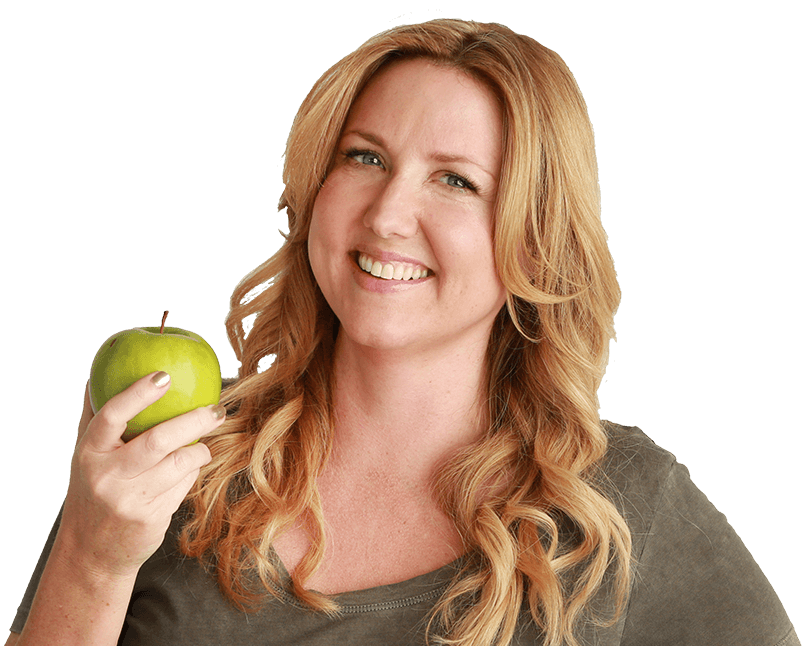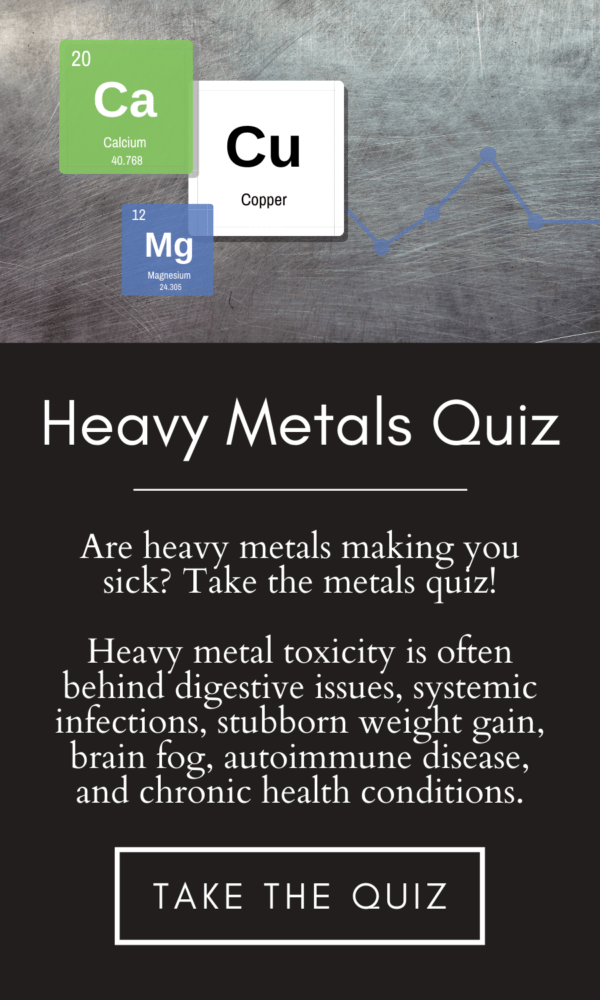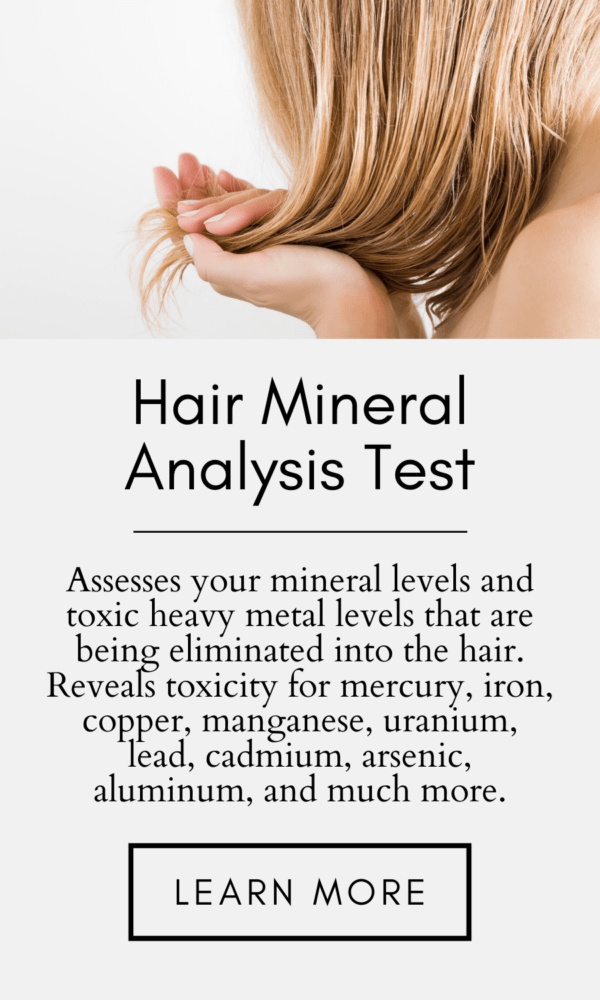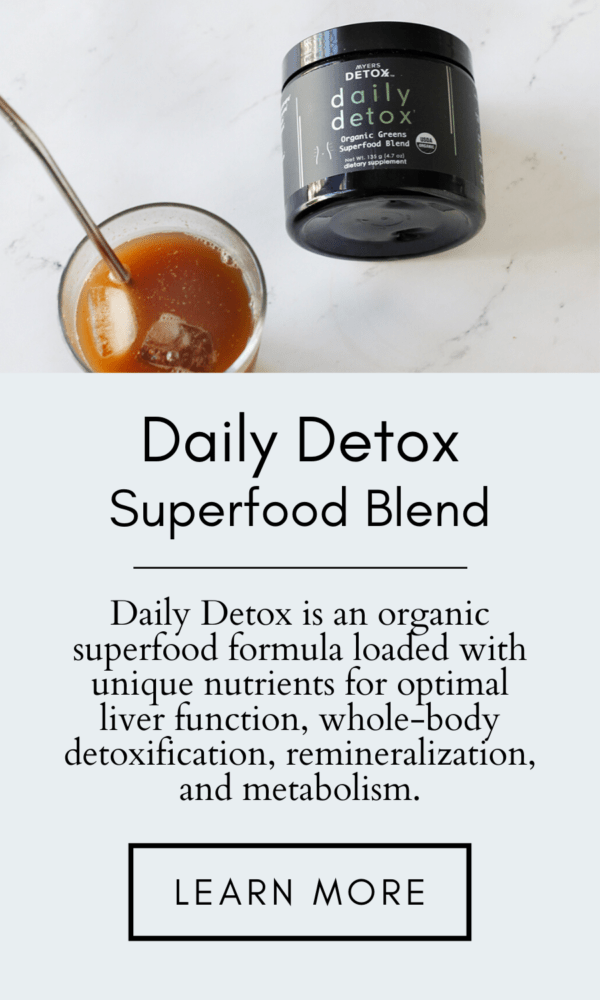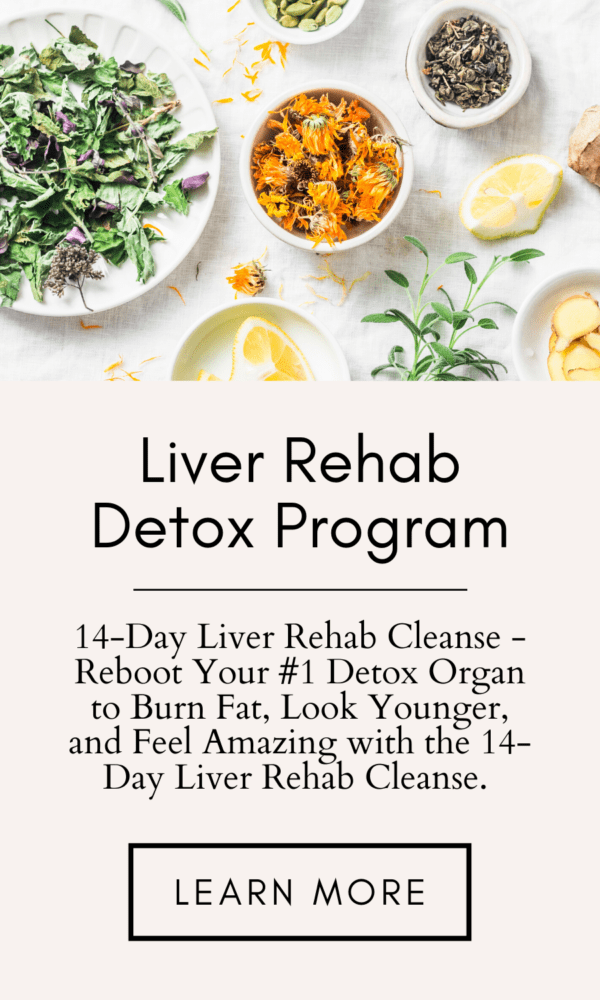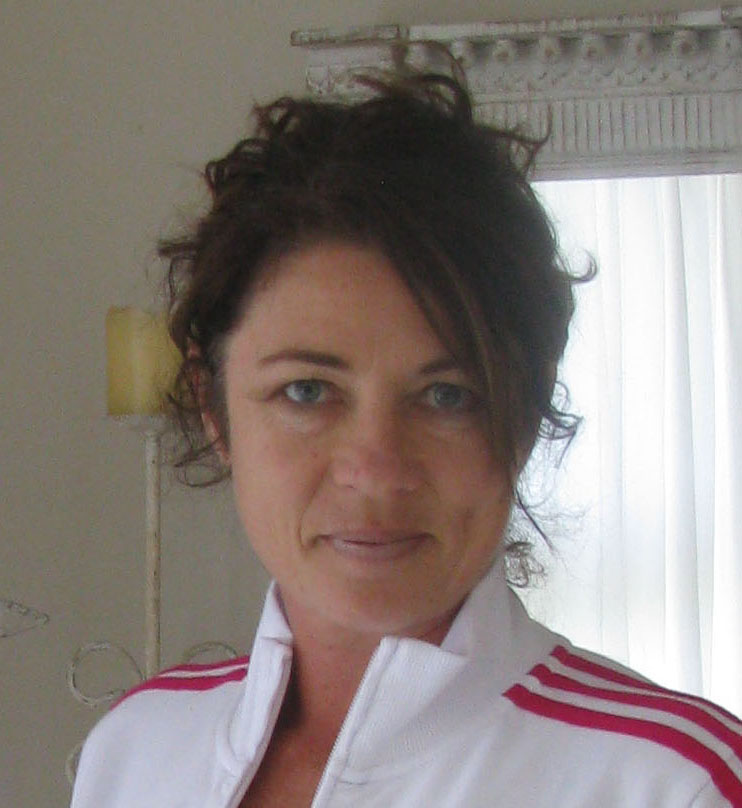Listen
Listen to this podcast or watch the video. CLICK HERE
Transcript
Wendy Myers: Hello, everyone. My name is Wendy Myers of myersdetox.com. Thanks so much for joining me today on the podcast. I love doing this podcast every week and informing you guys about heavy metal toxicity and the importance of detoxing every area of your life. Today, we have my friend, Julie Donaldson on the show, and we’re going to be talking about estrogen dominance and estrogen toxicity. This is a huge problem. So many women suffer from hormonal issues, from infertility, reproductive issues from low libido, and there are so many things working against our hormones. The plastics, our beauty products and so many pesticides that are put on our food, so many toxins that interfere in our hormonal health, and we’re going to provide some answers today, some clues to know what’s going on in our body and some solutions on how to reverse estrogen toxicity and estrogen dominance and also how to prevent estrogen toxicity and also interestingly, the connection between estrogen toxicity and SIBO, which is small intestinal bowel overgrowth or infection of good bacteria in your intestines that a lot of people suffer from and may not know why or can’t figure it out.
We’re going to talk about the difference between estrogen dominance and estrogen toxicity. Really, really good show today. If you want to learn about detoxification, I work with thousands of clients, and I’ve distilled down my top 10 tips to detox like a pro, and I put it into a simple checklist that you can download at detoxforenergy.com. Just go there. Type in your e-mail, and I will send you this free checklist. It really helps to distill down all the top tips, really simple things that you can do at your home like diet in regards to simple supplements that you can take to detox your body. Really, really simple tips, so just go to detoxforenergy.com.
I’m so excited this week. My friend, Connie Zack at Sunlighten Sauna is sending me a new infrared sauna. I have had one of their Sunlighten Saunas for a while, and it died on me because I used it so much. They’re sending me a brand new one. I’m so excited. I’m getting a three-person Conquer. It’s like eucalyptus weed, and it’s got chromotherapy. It’s like light therapy inside of it, and it’s got sound therapy and so many amazing features that I’m so excited to use it. It’s called 3-in-1. It’s got near, mid and far infrared technology, and it pulses the infrared rays because it helps them to penetrate deeper into your skin and really maximize the detox effect.
A lot of people don’t realize that when you’re going into a regular sauna, say, at your gym, you’re getting a lot of heat. It’s a dry heat, but it’s really difficult to stay in that type of sauna for very long and really experience all the benefits that a sauna can give you for detoxification, but with an infrared sauna, the temperature inside the sauna is much lower because the infrared rays penetrate your tissue and heat you from the inside, out. They also vibrate your cells to help them release the toxins. They work in a lot of different ways so that your sweat that you produce is much more productive with toxins. It has much more toxins in it than sweat from a typical sauna, though that’s very effective for detoxification. Needless to say, I’m super excited. I’m getting a brand new sauna in a couple weeks.
I’m going to be doing some videos on my YouTube channel, youtube.com/wendymyers and just show you all about it and teach you all about the importance of using an infrared sauna for a long healthy disease-free, medication-free life. I can’t emphasize enough the importance of using an infrared sauna. If you want to learn more about saunas, you can go to myersdetox.com/infrared-sauna. It’s got tons of information to just teach you all about the different type of saunas, how they detox you and all the different benefits of infrared saunas.
Our guest today, Julie Donaldson, she’s a very good friend of mine. She has over 36 years of experience in the healing arts. She still works with clients. She’s an amazing practitioner, and she works as a metabolic typing individualized nutrition expert. It’s a certain type of metabolic typing you can do to find out what type of diet is right for you. It’s really, really interesting. She does functional health testing. She does biomeridian assessment and massage therapy, and she brings a broad knowledge base to the partnership between herself and her clients. She’s dedicated to the discovery of the whole person in the healing journey and in helping clients to establish supportive core beliefs and daily practices to achieve their health goals. Julie’s own personal experience with illness and a need for integrated solutions contributes a great understanding to what people are experiencing and how to achieve this balance.
She’s praised as an excellent listener and investigator. She brings the compassion of a person who has been significantly ill to the table in a very meaningful way. Julie specializes in the areas of GI dysfunction, women’s health, children’s health and spectro nutrition, autoimmune disease, methylation dysfunction, thyroid imbalances, viral, retroviral conditions and mood disorders. With each of these specialties, she applies individual investigations and appropriate testing choices with measurable follow-up procedures. You can learn more about Julie at truenaturehealthconsulting.com.
Julie, thank you so much for joining us on the podcast.
Julie Donaldson: Thank you, Wendy. I’m so happy to be here with you.
Wendy Myers: Why don’t we talk a little bit about how you got into the health field?
Julie Donaldson: Absolutely. I’ve always loved to tell that story, kind of the wounded warrior story, if you will. My entry into the field came, really honestly, in two different ways. First in my early 20s. I went through very close-packed and tragic deaths of three people very close in my life. it threw me into a tailspin of depression, inability to digest, inability to detoxify, just all of my systems were down. I was on a path to do a PhD in psychology, and I moved off that path and went into alternative health, first trained as a massage therapist because I was partially healed by someone in that profession. Then, I moved on to functional health and onto clinical nutrition from there, and that’s a big piece of how it happened.
Several years later also, I began to experience another health crisis in response to this type of toxicity we’re going to talk about today. I grew up in Florida in the middle of citrus groves that were sprayed aerially every other day with intense pesticides. I started to have a lot of hormonal issues, very difficult cycling and symptoms during my cycling, again, digestive issues. Then, as I began to be pregnant, suffered miscarriage, suffered with my son, a very, very preterm birth, which we both survived, but all of which could be related back to many of these toxin and hormone problems.
Wendy Myers: Yes, and that’s what we’re going to talk about today about estrogen and estrogen toxicity, estrogen dominance, and it’s a very important topic. I did one podcast about this long, long, long, long time ago, many years ago, but I really think it is one of the more important topics of our time. I was just having a discussion today with someone today about that, about how all the pesticides, plastics, beauty products, so many things we’re putting on in our body are mimicking estrogen in our body or causing infertility issues, animals to be born, hermaphrodites. Males suffering, having smaller testes, and there’s a lot of health issues, cancers around estrogen dominance and estrogen toxicity. Let’s talk a little bit about the difference between those two.
Julie Donaldson: Sure.
Wendy Myers: Talk to me about the difference between estrogen dominance and estrogen toxicity.
Julie Donaldson: Right, and that’s a great question because it is very frequently misunderstood. People assume that they come packaged together, and they don’t necessarily, okay? Dominance is essentially explained by excess, and it’s very much relative to the balance of all of the sex hormones in the body. If there is way too much estrogen in relationship to progesterone, testosterone, all of these other hormones. That’s where we look at dominance, okay? There can be dominance existing even in a state of deficiency, okay? Someone who experience deficient symptoms can also be dominant because again, it’s a relative thing, okay? The difference is that in dominance, there might still be proper metabolizing of the estrogen, but there’s just too much of it. There is an excess of it, okay, whereas with toxicity, it is really an issue of those metabolites being broken down properly, right?
Wendy Myers: Yes.
Julie Donaldson: These are fat soluble, agonistic metabolites that are binding and aggressive. That is the definition of agonistic. They are problematic when they’re not methylated. We’re really looking at, is this a question of the body is producing too much estrogen and lots of different reasons for that as well, or is it an issue of the body might be producing a normal amount of estrogen, but it is not detoxifying those metabolites properly, okay?
Wendy Myers: Yes.
Julie Donaldson: Right, yes.
Wendy Myers: Now, what are some of the symptoms of estrogen toxicity?
Julie Donaldson: Well, symptoms of either one can be very similar although I would say with toxicity, there is a little bit less of the menstrual-related symptoms. In dominance, we see more of the breast tenderness, the moodiness. Moodiness can happen with either one, but headaches toxicity. We see more headaches. We see more brain fog. We see moodiness that is not necessarily connected to the cycle. It’s more of a perpetual type of a thing, difficulty with being around any type of aromatics even sometimes the natural ones. People with toxicity will certainly respond negatively to perfumes and chemical types of aromatics, but many of them also can respond negatively to natural ones as well, so yes.
Wendy Myers: Yes, and so let’s talk about how estrogen toxicity happens. I mean we know that there are so many plastics. There’s pesticides. There are beauty products. We’re putting parabens and other types of toxins, perfumes that are estrogenic, so many cleaning products. Talk to us a little bit more about how exactly we become estrogen toxic.
Julie Donaldson: Yes, great. Another great question. I want to back up for a minute because this was a major period of time in my functional practice where I began to notice these correlations. I used to practice only in-person, one-on-one with people with a system called biomeridian, which is an electrodermal testing system. Time and time and time again, I was seeing these phenolic compounds coming up as issues in people’s systems, okay? The relationship is between what you just mentioned, and I call them the three big Ps, which are perfumes, pesticides, plastics, okay, petrols of any kind, really. Petroleum-based products of any kind. PAHs, BPAs, all of these things that are related to or included as petroleum. The interesting thing that I began to see is that phenolics have all the same biochemical structure, and it doesn’t matter if they are perfumes including natural aromatics, or they are petrol-based products, pesticides, plastics, hormones and foods.
There are many foods that are in the phenolic category as well. Lots of the browning fruits, lots of the darker fruits, chocolate, coffee, alcohol, these are all phenolic compounds. Given the world that we live in, this was really where I began this observation 20-plus years ago and understood that what ends up happening is we get mistaken identity. All of these other things are flooding the body, and they’re using the same receptor sites as the hormones, okay? What happens is the brain is saying, “I don’t have enough estrogen,” because it’s not locked on to the receptor site. Something petroleum-based or other type of phenol-based may be locked on to that receptor site, okay, and/or a person is potentially also dealing with poor detoxification of those elements, right? They don’t move out of the body. They stay. They’re taking up space, and the estrogen is not making where it needs to go. Estrogens are critical. They’re very important. There are lots of different functions in the body, including in the gut, which we’ll talk about in relationship to the SIBO.
I began to note that many people were struggling with this, and in a time, clearly, when we’re watching toxins just go off the charts, right? Also in a time where hormone replacement is becoming very popular. Yes, because people’s hormones are not in a state of balance. They are experiencing these symptoms. It became the new fad to address that through replacement, right? People become toxic. Also, weight gain is a huge deal here, okay? Estrogen toxicity and estrogen dominance as well are both fed by excess weight and fat, okay?
Wendy Myers: Yes, because fat actively produces estrogen, correct?
Julie Donaldson: Yes, exactly. If you are just producing too much estrogen, and likewise, I know this is a topic very close to your heart, if you are toxic, period, your body is going to collect fat as well, okay, because we are … It’s a safe haven for those toxins, right? Okay. When we are dealing with too much fat, we’re then going to be collecting these toxins, collecting more estrogens and having the body have an improper response to what is actually in the system, okay? You may already have lots of estrogen in the system but the brain is not perceiving it that way. The brain is perceiving there is very little and it’s constantly instructing the glands, the pituitary and the adrenal glands to produce more, okay? Again, we can go back to, well, if there’s more being produced, is it being broken down and metabolized properly or are we getting some kind of a toxin situation going on, right?
The epigenetic exposures are chronic at this point as we see this beginning of increase in estrogen toxicity, right? We see this also alongside 1960s and ’70s, use of lots of containers, right?
Wendy Myers: Yes.
Julie Donaldson: And bad diet. We’re looking at lots of packaged junk, and people are gaining weight. People are gaining toxicity, right? The hormones that are being released and the hormone mimicking compounds that are being released into water are another huge issue. We’re seeing microfibers of plastic in water now. People are showering in this, right? Some people are drinking it. Many people are only drinking filtered water, but this is another big area of exposure for people, right?
Wendy Myers: Oh yes, yes. Water is huge because even if you’re drinking filtered water, you’re soaking in all the toxins and chemicals in your shower water that most people have unless they have a whole house water filter.
Julie Donaldson: Yes, but a lot of people don’t know this. I’m surprised by how many people do not know this. When I talk to people, they say, “Well, I’m drinking filtered water. I’m drinking really good water,” and I say, “Are you aware, in a 10-minute shower, you are absorbing a gallon of water through your lungs and your skin. If that gallon is full of microfibers of plastic, there you go, okay? Yes, it’s a very difficult thing. Toxicity happens by the malfunction, basically, of the two pathways in the body of COMT, right, and CYP, okay? If either or both of those are not working properly, because estrogen has to be broken down in those two phases. First, it goes through the CYP 1A1, 1B1 pathways, and then it goes through COMT, okay, which is basically catalyzing the transfer of methyl groups from S-Adenosyl methionine, right, to the catecholamines of dopamine, serotonin, et cetera, okay? When those processes are broken down, we end up with these toxic remaining metabolites from the estrogens, okay, that can be clearly very dangerous to the body.
Wendy Myers: Yes. What are some of the best methods to resolve estrogen toxicity?
Julie Donaldson: Well, we need to assess and address a lot of things as we’ve just been talking about. We need to assess and address what the environmental factors are that are a big risk for people. We need to help people understand how to live and eat ecologically, right? Reducing the amount of packaging, reducing the amount of time wasted of a food, moving to someone’s plate. We need to remove those heavy metals because heavy metals are also now being understood to create excess binding for estrogens as well. There’s a lot of information coming out around that, so a person’s overall toxic load, not just the Ps that we’ve mentioned that are the biggies but everything because also, we’re looking at the fact that estrogen toxicity, as well as heavy metal toxicity or any type of toxicity is going to cause a reduction in the co-factors that are needed to deal with any type of toxicity, right?
When I’m working with someone who either has known estrogen toxicity or might need to investigate whether they have toxicity. I’m not just looking at the hormones because if there is malfunction there, we can almost guarantee there is malfunction in overall detoxification systems. Why is that happening? Likely, there is a burden that needs to be removed as well, right?
Wendy Myers: Yes, and the liver. The liver can be a major bottleneck as well because the liver metabolizes excess estrogen. It’s one of the reasons I do and recommend coffee enemas because it really helps that liver get functioning a lot better because our liver has to break down so many toxins, including estrogens.
Julie Donaldson: Exactly, yes, and gallbladder as well, okay? This is another thing that I work really hard to help people understand that, and I know you know this with your work as well, that lots of people are about, “Oh, let’s do a liver cleanse.” If you are hormone toxic, very bad idea, very bad idea. There are certain things you can use to support yourself safely, but if your methylation pathways and/or your excretion functions are not working, and I don’t just mean eliminating. I mean actually the body through that particular phase of detoxification being able to get a toxin out of the bowel, okay? Many times, they are reabsorbed, and this is a big issue. There is where coffee enemas and other types of supports are really amazing to help the body, help the gallbladder do more efficiently what it’s supposed to be doing, right? Producing bile, and of course, bile carries toxins, so great.
We encourage the production of the bile. We also have to look at is the bile, in what it brings each time a person eats, is it actually being emptied? Are the toxins that the liver has put into that bile being taken away, or are they reabsorbing? It’s a major problem juset because our bodies were not designed to deal with this amount of toxicity. It’s an evolutionary problem and will be, a good thousand years probably, turning that around and having the body come to any better ideas, functions around that, right?
Wendy Myers: Yes. That’s why it’s so important to support the body with different detox protocols and supplements.
Julie Donaldson: Yes.
Wendy Myers: Can you talk about some of your favorite ones to support estrogen?
Julie Donaldson: Yes, absolutely. I am a huge fan of the coffee enema. I love to see the coffee enema be supported with binders, which is something that you talk about. We’re all in this industry using at this point because again, we’ve all probably experienced and we’ve understood that when we start to push the system, whether it’s … A coffee enema is a type of push. It’s not a huge push. It’s a pretty safe one, but it still can in people who are very toxic and whose systems are not working at optimal function. It can create some difficulty in terms of response to that, so grabbing with a binder in addition to using a coffee enema is wonderful. We look at both COMT and how we support COMT with certain supplements and CYP, okay?
CYP, which again is first step, okay? We’ll talk about how we assess and address, how we actually look and verify how someone, to know that someone has this problem, but DIM, Diindolylmethane is probably the number one response supplementaly, naturally to estrogen toxicity, okay? It is a phytochemical that occurs naturally from the degradation of cruciferous vegetables, the digestion of cruciferous vegetables. Well, not everyone tolerates cruciferous vegetables especially if we have a SIBO situation, right, connected to estrogen toxicity. We can’t do cruciferous vegetables, so this is that concentrated boiled down. It is much safer than I3C and all three carbinol, which is the compound that comes from the digestion of cruciferous or a compound found in cruciferous. DIM is one of the first things, although we always have to assess how much dominance do we have versus how much toxicity do we have. DIM is critical definitely in cases of high amounts of estrogen and especially in cases of high amounts of dangerous estrogens, the 4OH and the 16OH, okay?
There are a couple of other things that are really helpful if the healthy estrogens are in normal range, but the dangerous ones are higher versus … Instead of lowering all estrogens, which DIM can do, we might focus on something like ellagic acid, which has some properties to reduce those dangerous ones specifically. It’s a type of antioxidant. That’s another one. Chaste tree, it can be extremely helpful because it can both detoxify estrogen to a small amount but lifts progesterone as well, so we’re working back towards that balance again between those. Again, what I just spoke about, increasing bile, increasing glucuronidation through the use of Calcium D-Glucerate. Excuse me. Cholagogue foods like artichokes, beets, beet greens, Jerusalem artichokes, all those types of things which help us produce more bile and then the use of binders for grabbing some of these things that we’re getting more storage with in the bile, okay?
There is also evidence lately that DIM can be anticancer and anti-infection. In cases where we have both estrogen toxicity and SIBO, it’s a really wonderful choice, okay? Let me emphasize. We’re talking about natural choices here, and most of these are very safe, but it is very important in my opinion that people think about being tested. Don’t just try to treat this by themselves because there can be toxicity with deficiency. If you start slapping certain things on just because a symptom tells you that you might have something, many symptoms can be caused by many different root sources, right? When we’re dealing with toxicity and especially a type of toxicity like this that can be cancer-causing, right, very good idea to be tested, assessed. Allow someone to help you develop a really good comprehensive and individual approach.
Wendy Myers: What kind of test do you like?
Julie Donaldson: Well, the DUTCH hormone test is the gold standard, definitely, for estrogen toxicity. It’s pretty much the only thing I use anymore because it does show us all of the individual levels of all of the hormones, but it also shows us the capacity. It shows us the function of these two really critical pathways, the CYP and the COMT. Don’t know of another test that’s doing that, so it’s … It is no more expensive than any other type of testing, really, especially where you’re really looking to get the right information. It just takes us straight in to what we really need, okay? I am pretty much always a proponent of doing a hair analysis in this situation.
Wendy Myers: Yes.
Julie Donaldson: I know you’re a big proponent of that as well, and particularly because while we can see what the capacities are of these pathways for breaking down the metabolites, the hair test is also an incredible way to see what the … And cheap way. It’s not expensive. It’s non-invasive. It’s very easy to do, and someone who’s trained to understand them can see through those results what type of excretion a person is actually getting. There are certain indicators in that test that tell us, well, we’ve got this much showing up, but does that mean that, that’s all that’s there? That relates on the hair test primarily to heavy metal, right? Excretory function is going to be very similar no matter the toxin is, right? We’re back to that whole question of, “Are we getting it broken down? Is it detoxified, whatever the substance is? Is it stored in the bile?” Then, when it’s released, “Is it being taken out? Is it being retained?” That’s a very cool thing that can be seen in the hair analysis. It’s a piece that helps us understand what is going on in addition to the methylation pieces, the excretory piece, yes.
A stool test is also sometimes very helpful in this case. Again, of course, if there are bacterial issues alongside estrogen toxicity, we want to know that. We want to be working with that. They do have many links with one another. There are elevations in certain markers on a good stool test. Again, I’m back to the gold standard. I use the GI map pretty strictly. That does not diagnose SIBO, but it diagnoses all kinds of other, or identifies all kinds of other pathogens. It will give us a clue with an elevation in something called Beta-glucuronidase that tells us that these functions are not working properly. They are associated with bacterial disturbances, typically, okay? Yes. These things all work in tandem to get a relatively easy assessment of where someone’s overall systems are, okay? Yes.
Wendy Myers: Let’s talk about the connection between estrogen toxicity and SIBO.
Julie Donaldson: Okay.
Wendy Myers: You’ve mentioned SIBO a few times. Tell us, for anyone that doesn’t know what that is, what exactly is SIBO? What’s the connection there?
Julie Donaldson: Yes. Well, SIBO is the increase in both types and numbers of bacteria in the small intestine which is under normal circumstances sterile, okay? These are bacteria that have unfortunately arrived in the small intestine from the large intestine, which is where they belong and where the colonies are in numbers to fight anything that is pathogenic and not helpful, right, commensal or dangerous in any way.
“Why does this happen,” is the question. In my opinion, and again, this is something that I have been developing in clinical practice for many years. It all started with observation. I think that one of the big issues is we know that the ileocecal valve is what’s allowing that bacteria to come back up from the large intestine into the small intestine where it does not belong, okay? I personally think that the valve gets damaged by toxicity, okay? Round and round and round and round it goes, and we know this on many other levels with heavy metals and all kinds of other things that they damage tissue, right? They damage joints. These tissues in the gut are very, very vulnerable, okay? The barriers are thin. They’re delicate, and again, not made of the types of onslaught that we are having, okay? I do feel that, that is one contributing factor.
Other contributing factors are that in both of these cases, we have oxidative stress going on, okay? There’s a lot of connection in SIBO with high oxidative stress through the increase in cytokines that happens and decreases in antioxidants. Again, we talked about no matter what … We were talking about toxicity. Now, I’m equating it with this particular bacterial problem. We see the same thing. We see reduction in glutathione. We see reduction in B vitamins, in zinc, in choline. All kinds of things that are critical to keeping the body properly cleansed, okay? They’re partnered up here, and it’s happening in both directions that the bacteria itself and its threat in the small intestine is creating some of the same problems as toxicity is creating, okay?
We also have, in SIBO, lipid peroxidation, okay? That’s where we have free radicals stealing electrons and damaging cells, which again is part of what I feel is happening to the valve and allowing that valve to not function properly and bacteria escaping. Lipid peroxidation also involves end-products of aldehydes. Aldehydes are phenolics, okay? Here we are, back in this circle again with these compounds that can be so deleterious, all right?
Wendy Myers: Yes. Let’s talk a little bit about are there ways to prevent estrogen toxicity in your opinion? I know there’s so many estrogenic toxins in our environment. It’s pretty hard to avoid them.
Julie Donaldson: It is. We have to, first of all, be educated about what they are and how we can avoid them. It’s easy enough not to buy perfumed detergents and cleaning products and things that are dangerous to everyone. That’s easy enough to do. Sometimes, we can’t, out and about in the world, avoid the contact. We can avoid plastics. We can avoid cooking in plastics. We can not avoid petro chemicals of many kinds. We can’t avoid gas. We’re all living amongst it, so we have to know how to move it in our bodies, okay? As I think you know, I am a metabolic nutritionist my first step with people is to stabilize the body with individual nutrition, okay, because it allows all systems to function on a better level. It allows everything to work better because it maximizes the production of ATP, which is gas to every single engine in the body, every single cell, okay? I think that is absolutely critical. Again, food sources are as critical. Removing pesticides, insecticides, all types of petro chemicals from what we’re ingesting in our food.
The importance of a joyful and peaceful and balanced life cannot be underestimated because we are also dealing with the hypothalamus pituitary axis when we are talking about hormones. If we’re dealing with genetic predisposition, that can only be dealt with in an individual through these epigenetic choices, as well as the choices of the best suited natural supplements for that person and the particular situation that they’re in. As we all know, epigenetics, when handled properly, can very frequently turn off those genetics, and have things be running more smoothly. I think that it’s very important to assess an individual, clearly removing most of the offending substances and living as clean and as local as possible. When we travel, it’s important to do additional things because there are many additional exposures in airplane travel and long distance car travel that add to the burden, so there can be some separate protocols to help people along those lines. Many of which you talk about, just used more regularly or in greater quantity because of the exposure that’s happening during that time.
Wendy Myers: Yes. Yes, let’s talk a little bit about hormone replacements. What are your thoughts on the safety of bioidentical hormone replacement? Do you ever recommend that?
Julie Donaldson: I rarely recommend it because I rarely find it necessary, okay? There are certain situations. There is some very fascinating stuff coming out about the use of, in certain situations, that involve great toxicity, mitochondrial damage. Those types of very complicated sets of pregnenolone in certain types of suspensions being extremely helpful, okay? I never say never. I never say always, but obviously, synthetic hormones are just not a good idea because they all lift estrogen reception. All of them. It doesn’t matter which one it is. It doesn’t have to just be estrogen, but when I do use bio identical hormones, it’s very short-term, okay? It’s primarily to help a person who’s just so symptomatic, so unhappy with where they sit that we can get some short-term support while we work underneath to correct all of the metabolics, all of the glandular function, moving the toxins because this all takes time, right?
Wendy Myers: Yes, it does. Mm-hmm (affirmative).
Julie Donaldson: Yes.
Wendy Myers: I’m not for Band-Aids too. It’s a symptomatic relief while you’re working on the metabolism and detoxification because, like you said, it does take time. People just want to feel better, and I think there’s nothing wrong with that in the interim.
Julie Donaldson: I don’t either. I don’t either, and it’s a case-by-case kind of a thing. In some cases, it’s going to contribute to the problem, potentially, so I just have to assess that carefully, but it’s really interesting also that during that time I mentioned where I was functioning primarily with people one-on-one, face-to-face and using the physical assessment system. Many of my clients were women in their 40s and 50s, experiencing hormonal changes and had gone for bioidentical hormone replacement because it became very popular during those years. Every single one of them said the same thing. It worked for three months, maybe up to six months. Then, it just quit working.
Wendy Myers: Interesting.
Julie Donaldson: I felt the same as I did before, or I felt worse. There is a reason for that, okay? That’s where I caution people against seeing that as really a solution.
Wendy Myers: Yes, yes.
Julie Donaldson: It is a great bridge, in many cases, yes.
Wendy Myers: Why don’t you tell the listeners where they can learn more about you and how they can work with you?
Julie Donaldson: Sure, I’d live to. I am truenaturehealthconsulting.com, and I love working with this situation. I love working with toxicity and overall metabolic improvement period. I support everything Wendy is talking about these days, and yes.
Wendy Myers: Fantastic. Well, thank you so much, Julie, for coming on the show and talking to us about this very, very important subject. Estrogens and Xenoestrogens, estrogen-mimicking toxins are everywhere in our environment, and we need to have awareness around them and prevent or stop them from putting them in our body.
Julie Donaldson: Right.
Wendy Myers: Thank you so much for talking to us about this subject.
Julie Donaldson: Thank you, and thanks for all you’re doing too, Wendy.
Wendy Myers: Yes, thank you.
Julie Donaldson: Mm-hmm (affirmative).
Wendy Myers: Everyone, thank you so much for tuning in today to the podcast. Please go on iTunes and take a couple seconds to leave a review. I would appreciate it so, so much. You can learn more about me and learn from my 250 podcasts. I have hundreds of articles on my website on myersdetox.com. Also, if you want to learn about all my top 10 tips to detox like a pro, you can download my free checklist at detoxforenergy.com. Thanks so much for tuning in.

